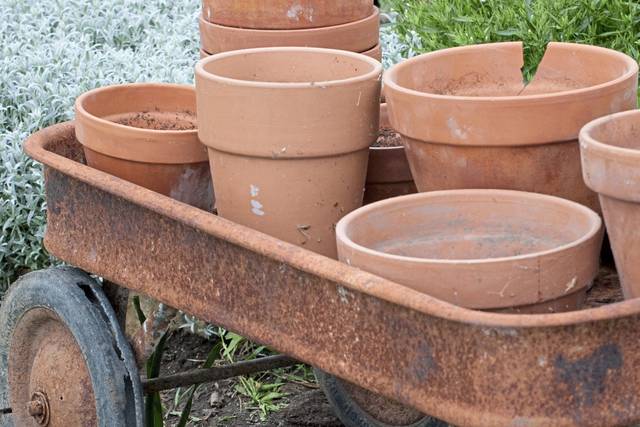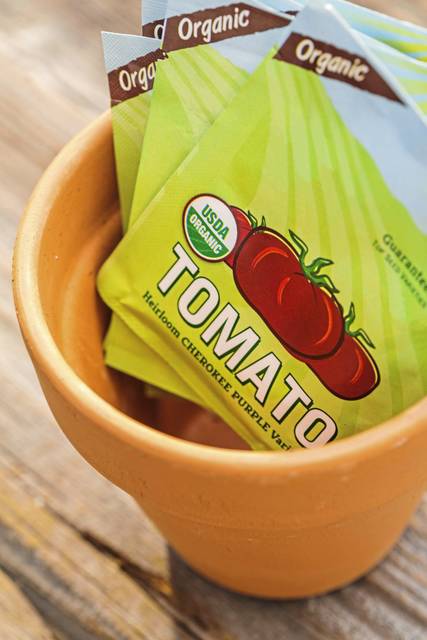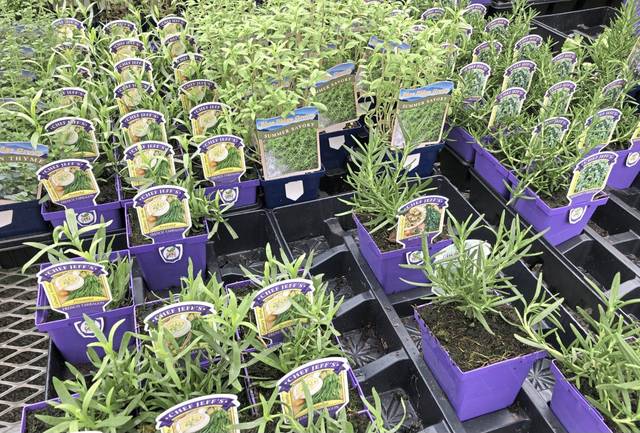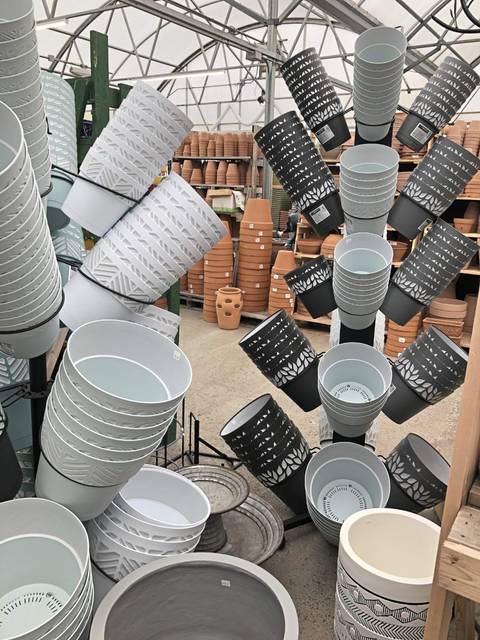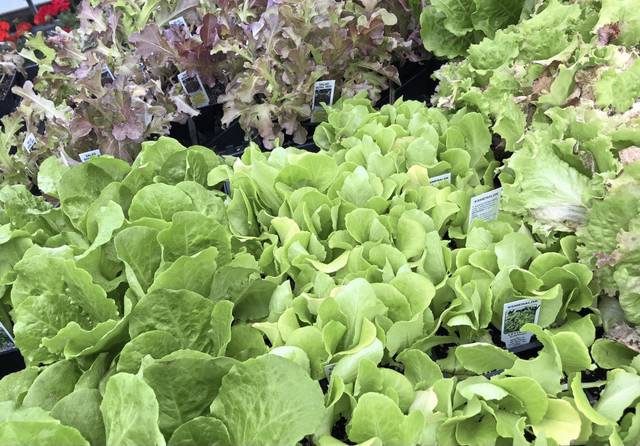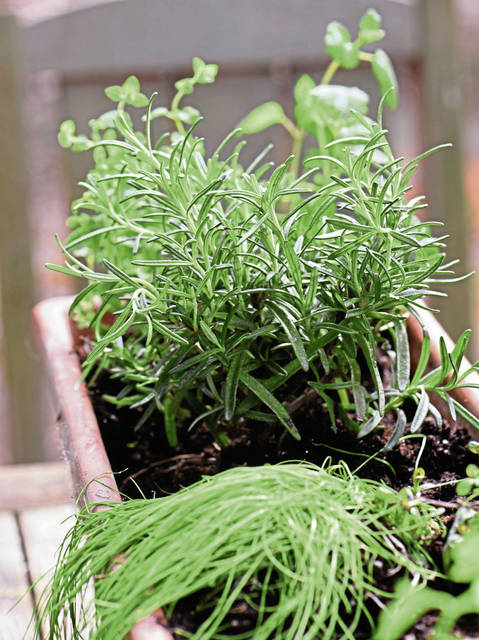Put it in a pot: Planting in small spaces yields big results
Cut flowers, potted plants and hanging baskets are all traditional Mother’s Day gifts.
But did you ever think of giving Mom a tomato plant?
A container garden just might be a refreshing and tasty way to think outside the Mother’s Day gift box — or pot, as it were.
“A lot of people don’t have space for a garden in the ground, but they still want fresh vegetables,” said Angela Iezzi, a landscape designer at Jason Wilkinson Nursery in Armbrust.
Planting vegetables in small containers is a great way to get that garden-grown taste and quality without a big investment of land and labor. Everything from herbs, peppers, lettuces and other leafy greens to root crops, vining vegetables and tomatoes can be successfully grown that way.
Iezzi says the most popular container crop is tomatoes.
“People enjoy a fresh tomato more than any other vegetable,” she said. “That’s because you can’t get a ripe tomato in the grocery store, I don’t care what time of year it is. And nothing tastes as good as a fresh, ripe tomato.”
Greensburg Garden Center member Terry Rodgers said she first tried container gardening about 40 years ago on the balcony of a second- floor apartment in New Stanton.
“I had one tomato plant and some herbs. That’s all I had room for,” she said.
All these years later, she has returned to container gardening for the convenience, growing not just tomatoes and herbs but also things like peas and radishes on the patio of her Greensburg home.
Watering is easier and she doesn’t have to bend as much for weeding. Rabbits have a harder time reaching plants in containers, and deer are less likely to venture onto the patio.
“It’s convenient to my kitchen. I can just go out and snip some herbs,” she said. As a bonus, she can sit on the patio and enjoy the beauty of her plants.
Here are a few tips for getting started with container gardening:
Pick your pot
While there are plenty of attractive pots in all shapes, sizes and materials available at garden centers and big box stores, just about any container can do, Rodgers said.
“You can start with a 5-gallon plastic bucket. It’s a quick, cheap way to start,” she said. “Just drill some holes in the bottom for drainage.”
Elizabeth Pesci of Greensburg, Greensburg Garden Center treasurer, said she’s even filled a grocery store produce bag with soil and grown potatoes in that.
The most important thing about the container is making sure it’s big enough for the plant or plants it will hold, she said.
Bigger is better for a few reasons, said Dave Vargo, owner of Kiski Plaza Garden & Feed Center in Leechburg. He recommends a 3-to-5-gallon pot per plant.
A larger pot gives roots room to grow, it retains more water for less frequent watering and adds the option of growing more than one plant per pot — except for tomatoes. The rule for tomatoes is one plant per pot, he said, because of their larger roots.
As Rodgers said, be sure the container has drainage holes in the bottom. Add a layer of gravel to aid in drainage, Iezzi said.
As for soil, a good potting mix or garden soil will do.
“Just don’t use native soil,” Pesci said. “Our native soil has a lot of clay, and it eventually sets up like a brick.”
Seek out the sun
Most vegetables need at least six hours of sun per day, Vargo said.
“Vegetables typically grow in a field, where they get that full sun,” Iezzi said. “When they’re on patios in the shade, they won’t do as well.”
If you have to pick between your plants getting sun in the morning or afternoon, Vargo said, pick the morning sun: Afternoon sun is hotter, so it can burn your plants.
Luckily, he added, most containers can be moved to take advantage of the best available light.
When to water
“Water the soil, not the plant,” Iezzi said. “People will often spray their plants, but that’s not necessary.”
To determine when a plant needs water, Iezzi said, she uses a dowel rod to gauge the moisture level in the soil.
“Stick it in about 3 inches. If the dowel comes up wet, it’s OK; if it’s dry, it’s time to water,” she said. Water until it runs out of the bottom of the pot.
“A lot of people talk about the best time to water, but I’m a realist,” she said. “Watering when you can is the best time to water.”
Food for thought
Most soil mixes come with fertilizer added, but that won’t sustain your plants through the growing season.
“When you water, you’re washing out a lot of those nutrients, so it’s good to fertilize often,” Vargo said.
Pesci said Osmocote is a good fertilizer for general use, although she likes to use a specific fertilizer for tomatoes that promotes growth of the fruit instead of the greens.
Vargo said he prefers Jack’s Classic Tomato Feed because it also helps to control blossom end rot.
Gardening rule no. 1
Whatever you grow, whatever pot and fertilizer you use, Iezzi said her first rule of (green) thumb is this:
“Don’t stress about it. Gardening should be relaxing and rewarding. You want to enjoy the fruits of your labor.”
Here are some things to try from the garden experts:
Sauce garden
You can plant everything you need to make a good marinara sauce in one container, Iezzi said.
The key to growing a sauce garden is to make sure your pot is big enough. Iezzi recommends one that is at least 18 inches in diameter. Depth is less important, she says, but it should be at least 1-foot deep and should have a shallow layer of gravel in the bottom for drainage.
Iezzi likes Espoma garden soil, which comes with fertilizer added.
Roma tomatoes make for the best sauce, she said. Use one tomato plant per pot, surrounded by herbs of your choice, such as basil, oregano or parsley.
Whether using seeds or seedlings, plant your herbs at the same time as the tomato, which should be staked or trellised.
“The herbs will come up fast, but don’t add them later,” she said. “You don’t want to disturb the roots of the tomato.”
There’s just one thing to remember when tending a sauce garden, Pesci said.
“Tomatoes are bullies,” she said. “They have a larger root system, so they tend to suck up the water. By midsummer, the other plants might not be doing so well.”
Still, it’s worth a try, she said: “I’ve grown a sauce garden, and it was a lot of fun.”
“Sauce gardens are really popular,” Iezzi said.
Lettuce wreath
One container garden that can double as a decoration is a lettuce wreath, Pesci said.
She experimented one year with a lettuce wreath by packing a wire wreath frame with sphagnum moss, topping that with potting soil and then planting lettuces.
“I grew it on a table for about a month,” she said. “I laid it flat, so there was no gravity pulling on it. After about a month, my plants looked really good.”
At that point, Pesci said, the wreath was sturdy enough that she could have hung it on a wall, but she decided to leave in the middle of her patio table as both an edible and decorative item, pick the lettuce leaves as they grew.
Fig tree
Growing your own is one of the few ways to get a fresh fig, Vargo said, because the fruit can’t be picked before it’s ripe and it doesn’t last long once it’s picked.
“People love them, and they’re nice to grow,” he said.
A fig tree will reach about 6 or 8 feet in a 10-gallon pot, he said, but they do take some care.
They need to be pruned, and they aren’t hardy in the cold Pennsylvania winters, so they need to be take inside — where they will drop their leaves.
But Vargo thinks they’re worth the trouble: “Have you ever had a fresh fig? They’re delicious.”
Shirley McMarlin is a Tribune-Review staff writer. You can contact Shirley by email at smcmarlin@triblive.com or via Twitter .
Remove the ads from your TribLIVE reading experience but still support the journalists who create the content with TribLIVE Ad-Free.

